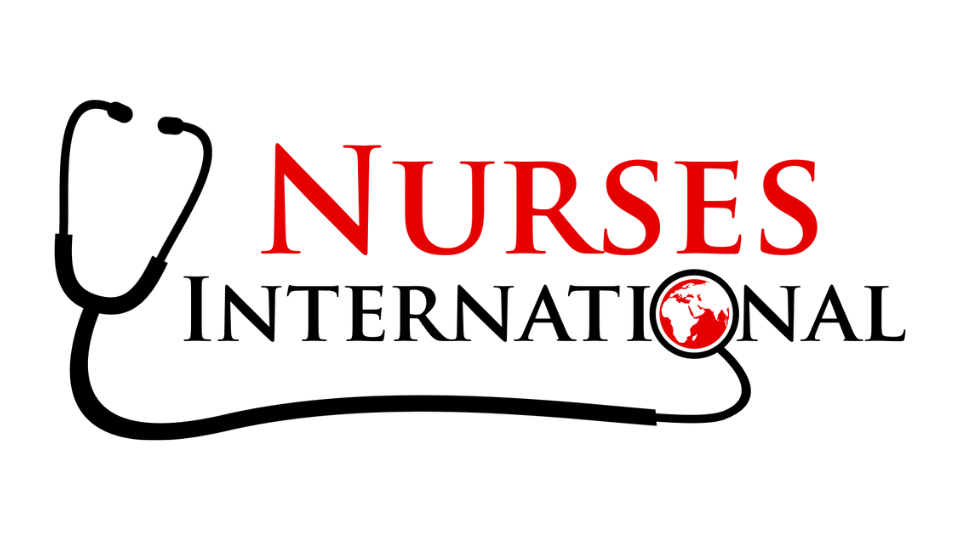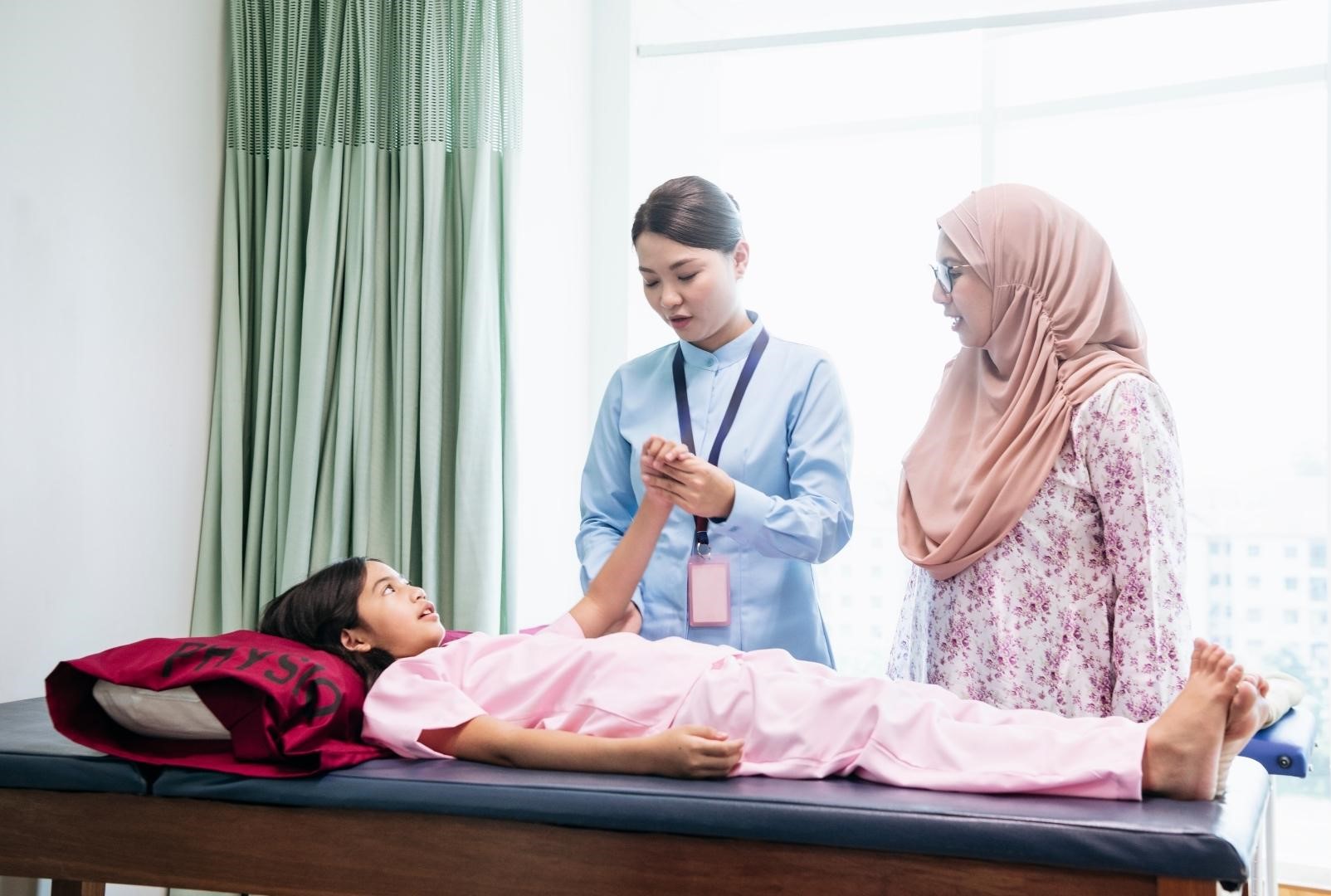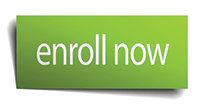-
Pediatric Nursing Homepage

DISCLAIMER: This content is designed to enhance the study of nursing. This content is generic and is not designed to take into account the specific objectives, needs, and/or circumstances of any particular region or country. To become a nurse, learners must successfully complete a program of study approved by the government or state-regulatory agency in their place of residence. We cannot guarantee that the successful completion of these materials will enable you to practice in your place of residence. Make sure that you are in compliance with the scope of practice of your regulatory body before attempting to put into use or practice any of the knowledge gained.

This Pediatric Nursing course provides information and instructions on foundational concepts and principles of nursing care related to Pediatric health concerns in the hospital and/or community settings. This includes applying knowledge and skills required in nursing care for families with children. The goal is to provide a strong foundation in nursing theory, critical thinking and clinical judgment, evidence-based practice, and safe clinical care in all settings for children’s health.
The scope of pediatric nursing practice varies widely depending on the country, the national and regional government, and professional regulatory agencies. This course addresses nursing skills and practices on several levels to be relevant to the global pediatric nursing community. It is the nurse’s responsibility to know what particular regulations apply to their practice area.
The Pediatric Nursing course is a competency-based course developed in partnership with Nurses International (N.I.) and NextGenU.org (NGU). Competencies were developed in collaboration with subject matter experts in Pediatric nursing education and practice. The Essentials: Core Competencies for Professional Nursing Education direct the course objectives. The course uses learning resources from accredited world-class organizations such as the World Health Organization (WHO), the U.S. National Institutes of Mental Health (NIMH), universities, international guidelines, and peer-reviewed journals. The Moodle Learning Management System (LMS) facilitates distance learning. The course was designed by NextGenU’s Instructional Design team and Nurses International’s team members: Kathleen Capone MS, RN CNE, EdD; Cissy Ondoma Nakyajja RN Ph.D.; Betsy Woods MSN, R.N., CPEN; Emily Pappa MSN, R.N.; Lourdes Webster RN, BSN, MSN; Rachel Loftin, MSN, R.N.; Stephanie Marfurt APRN-BC, ARNP-BC; Marija Bjegovich-Weidman RN, BSN, MSN, CCAP; Jordan Wilson MSN, RN-BC; Caitlin Cartmell MFS, BSN, R.N.; NPD-BC;

There are 6 units/modules to complete, which include:
Unit 1: Perspectives in Pediatric Nursing
Unit 2: Child Growth and development in the context of family and community
Unit 3: Therapeutic communication and cultural competence with children and families
Unit 4: Nursing care of the sick child
Unit 5: Child Maltreatment
Unit 6: Community-Based Pediatric Nursing CareInstructions:
The course consists of six (6) learning units. Included in the units are individual lessons with accompanying assigned reading resources, PowerPoint presentations with speaker notes, learner self-assessments, and interactive clinical judgment learning activities. A passing grade of 80% is required on quizzes and unit exams, as well as submission of the required activities for all case studies/reflection activities to gain access to the next lesson or section.
There is a 50-question multiple-choice exam at the end of the course. A grade of 80% is required. If a grade of 80% is not achieved, the learner may be self-remediate and take another exam. The second exam is of comparable content, and 80% is required for a passing grade.
A certificate of completion may be downloaded upon successful completion of the course.
Engaging with this Course:Learners may take this course at no cost for personal enrichment. There are no course prerequisites.
To obtain a certificate, the learner must successfully complete:
- All the reading requirements;
- All quizzes and unit exams with a passing grade of 100%;
- All activities and case studies;
- The final exam with a minimum of 80% and a maximum of 2 attempts, and;
- The self and course evaluation forms.
NextGenU.org is happy to provide your institution with:
- A link to, and, a description of the course training, so they can see all its components, including the co-sponsoring universities and other professional organization co-sponsors;
- Your grade on the final exam;
- Your work products (e.g. case study activities) and any other required or optional shared materials that you produce and authorize to share with them;
- Your evaluations -- course and self-assessments;
- A copy of your certificate of completion.
To obtain a degree:NextGenU.org co-sponsors degree programs with institutional partners. To obtain a full degree co-sponsored with NextGenU.org, registrants must be enrolled in a degree program as a student of a NextGenU.org institutional partner. If you think that your institution might be interested in offering a degree with NextGenU.org please feel free to contact us.
We hope that you will find this a rewarding learning experience, and we count on your assessment and feedback to help us improve this training for future students.
For Nurse Educators:
- There are teacher resources for this course, including didactic and clinical syllabi, a teacher’s guide, and suggested teaching activities.
- Nurse educators may contact info@nursesinternational.org with queries/permission to access faculty files for this course.
Technical Support for Learners and Educators:If you experience any difficulties with the technical aspects of the course or access to any course activities, please contact <strong>support@nextgenu.org</strong> for assistance.
-
Unit 1 - Perspectives in Pediatric Nursing

Unit Objectives:
- Explain the role of the nurse in the care of children and families.
- Describe a family-centered approach to the care of children and their families.
- Analyze the structures, roles, and functions of the family and how they affect the health of children.
- Identify health care barriers affecting children and families.
- Identify legal and ethical issues related to the care of children and nurses’ role.
- Identify and define measurements used to assess health and illness in children.
-
1.1 - Role of Pediatric Nurse
Student Learning Outcomes:
Upon completion of this lesson, you will be able to:- Explain how a nurse can be an advocate for a child and their family.
- Discuss strategies a nurse can utilize in providing health education, support/counseling, health promotion, disease prevention, and injury prevention strategies with children.
- Briefly explain the roles of the nurse in research, coordination, collaboration, and health care planning in the care of children and their families.
- Identify the nurses’ role in ethical decision-making in the care of pediatric patients and their families.
8 URLs -
1.2 - Concept of Family and Its Influence on Child Health
Student Learning Outcomes:
Upon completion of this lesson, you will be able to:- Define family.
- Identify family structures and functions.
- Describe family roles.
- Describe how family influences child health.
- Explain nursing implications related to family and child health.
15 URLs -
1.3 - Family-Centered Care
Student Learning Outcomes:
Upon completion of this lesson, you will be able to:- Define family-centered care.
- Identify essential elements of family-centered care.
- Explain the significance of applying the family-centered approach in caring for children and their families.
- Discuss the nurse’s role in family-centered care.
9 URLs -
1.4 - Morbidity and Mortality
Student Learning Outcomes:
Upon completion of this lesson, you will be able to:- Define neonatal, infant, and childhood morbidity and mortality rates.
- Identify three major causes of death during infancy, early childhood, late childhood, and adolescence (within your country/region and globally).
- Identify at least three ways how a nurse can apply knowledge of morbidity and mortality to improve child health.
Approximate time required for the readings for this lesson (at 144 words/minute): 1 hour and 15 minutes.
11 URLs -
1.5 - Ethical Issues in Child and Family Nursing
Student Learning Outcomes:
Upon completion of this lesson, you will be able to:- Define the term ethics.
- Identify factors that influence ethics.
- Discuss the core principles of health care ethics.
- Discuss the various ethical issues in pediatrics.
- Explain the nurses’ role during ethical dilemmas.
Approximate time required for the readings for this lesson (at 144 words/minute): 2 hours and 55 minutes.
14 URLs -
Unit 2 - Child Growth and Development in the Context of Family and Community

Unit Objectives:
- Identify normal developmental changes occurring in children (0-17yrs).
- Assess health and development of child (0-17) years.
- Discuss the nutritional requirements of children based on their developmental stage.
- Apply knowledge and understanding of theories of psychological development.
- Identify and discuss social, cultural, and environmental/ community factors that influence child development.
-
2.1 - Growth and Development of Newborn and Infant
Student Learning Outcomes:
Upon completion of this lesson, you will be able to:- Identify normal developmental changes that occur in the newborn and infant.
- Describe the gross and fine motor milestones of newborns and infants.
- Compare and contrast common developmental theories (Erikson’s, Freud’s, and Piaget’s theories) in relation to the growth of newborns and infants.
- Describe nutritional requirements of newborn and infant.
- Discuss factors that affect /influence nutrition in newborns and infants and implications for nursing care.
- Identify common issues related to growth and development in infancy.
- Discuss the nurse's role in newborn and infant development.
9 URLs - Identify normal developmental changes that occur in the newborn and infant.
-
2.2 - Growth and Development of Toddler
Student Learning Outcomes:
Upon completion of this lesson, you will be able to:- Explain normal developmental changes (e.g., physiologic, cognitive, psychosocial) that occur in the toddler.
- Examine common developmental theories (Erikson, Freud, and Piaget) in relation to the growth of a toddler.
- Identify the gross and fine motor milestones in toddlers.
- Demonstrate understanding of emotional and social development in toddlers.
- Describe the nutritional requirements of toddlers.
- Discuss nurses' role in the development of a toddler.
Approximate time required for the readings for this lesson (at 144 words/minute): 1 hour and 37 minutes.
13 URLs -
2.3 - Growth and Development of Preschoolers
Student Learning Outcomes:
Upon completion of this lesson, you will be able to:- Identify normal developmental changes (e.g., physiologic, cognitive, psychosocial) that occur in a preschool-age child.
- Examine common developmental theories (Erikson, Freud, and Piaget) in relation to the growth of preschoolers.
- Understand and explain the nutritional requirements of a preschooler.
- Identify common issues related to growth and development in a preschooler.
- Discuss nurses' role in the development of a preschooler.
Click here to start this lesson10 URLs -
2.4 - Growth and Development of School-Age Children
Student Learning Outcomes:
Upon completion of this lesson, you will be able to:- Identify normal developmental changes (e.g., physiologic, cognitive, psychosocial) that occur in a school-age child.
- Examine common developmental theories (Erikson, Freud, and Piaget) in relation to the growth of a school-age child.
- Explain the nutritional requirements of a school-age child.
- Identify common developmental concerns of the school-age child.
- Discuss the nurse’s role in the growth and development of a school-age child.
9 URLs -
2.5 - Growth and Development of Adolescent
Student Learning Outcomes:
Upon completion of this lesson, you will be able to:- Identify normal developmental changes (e.g., physiologic, cognitive, psychosocial) that occurs during adolescence.
- Examine common developmental theories (Erikson, Freud, and Piaget) in relation to the growth of the adolescent.
- Demonstrate knowledge of nutritional requirements during adolescence.
- Identify common developmental concerns during adolescence.
- Describe the nurses’ role in adolescent growth and development.
7 URLs -
2.6 - Safety and Injury Prevention in Children
Student Learning Outcomes:
Upon completion of this lesson, you will be able to:- Identify common safety issues and injuries in children in relation to their stage of development.
- Identify risk factors for injuries among children
- Identify common sources of injuries in children based on developmental stage.
- Explain measures for ensuring safety and preventing injuries among children.
- Discuss nurses’ role in safety and injury prevention among children.
6 URLs -
2.7 - Health Assessment in Children
Student Learning Outcomes:
Upon completion of this lesson, you will be able to:- Demonstrate obtaining an appropriate health history from the child and parent or caregiver.
- Perform health assessment utilizing approaches related to the age and developmental stage of the child.
- Explain the appropriate sequence of the physical exam based on the child’s developmental stage.
Click here to start this lesson4 URLs -
2.8 - Immunization
Student Learning Outcomes:
Upon completion of this lesson, you will be able to:- Demonstrate knowledge of principles of immunization.
- Identify the current recommended immunization schedule for children (0-17 years), components of the immunization card, and the immunization routes.
- List the possible side effects of vaccines, precautions, and contraindications.
- Discuss barriers and facilitators to immunization.
- Discuss the nurse’s role during immunization.
17 URLs -
2.9 - Social, Cultural, and Environmental/Community Factors Influencing Child Development
Student Learning Outcomes:
Upon completion of this lesson, you will be able to:- Discuss how social, cultural, environmental, and socioeconomic factors impact a child’s growth & development (e.g., school environment, peer groups, social roles, media, etc.,).
- Discuss the nurse’s role in providing care to children and families from various social, community, and cultural backgrounds.
8 URLs -
Unit 3 - Therapeutic Communication with Children and Families
Unit Objectives:

- Demonstrate appropriate and effective communication techniques/skills with child and family based on their age, ability, language, culture, and another relevant contexts.
- Discuss barriers to effective communication with the child and family.
- Identify strategies nurses can apply to foster effective therapeutic communication.
-
3.1 - Verbal and Non-Verbal Communication
Click here to start this lessonStudent Learning Outcomes:
Upon completion of this lesson, you will be able to:- Understand the basic skills for communicating with children.
- Discuss strategies/techniques nurses can utilize to appropriately and effectively communicate verbally to children.
- Discuss strategies/techniques nurses can utilize to appropriately and effectively communicate non-verbally with children.
- Discuss strategies/techniques nurses can utilize to appropriately and effectively communicate with parents/caregivers.
- Discuss common strategies for challenging communication with children/parents with special needs.
4 URLs -
3.2 - Communication and Counseling Skills
Student Learning Outcomes:
Upon completion of this lesson, you will be able to:- Discuss how the social and cultural environment impacts family communication.
- Analyze family communication patterns (functional and dysfunctional family).
- Discuss strategies a nurse could utilize to promote continued family and interprofessional communication.
- Identify strategies a nurse can utilize to for effectively communicate with families during counseling.
8 URLs -
3.3 - Health Teaching
Student Learning Outcomes:
Upon completion of this lesson, you will be able to:- Discuss the process of health teaching as it relates to children and their families.
- Identify the components of learning needs assessment.
- Discuss techniques a nurse could utilize to improve learning among children and their families.
- Explain techniques a nurse can utilize to evaluate learning among children and their families.
12 URLs -
3.4 - Cultural Competence
Student Learning Outcomes:
Upon completion of this lesson, you will be able to:- Define cultural competence.
- Explain why a nurse should be culturally competent to care for children and families.
- Identify barriers to cultural competence in health care.
- Discuss strategies a nurse can utilize to overcome barriers to competence.
- Describe the steps of developing cultural competence.
10 URLs - Define cultural competence.
-
Pediatric Nursing Part 2 Password
 In this section, after completion of the required activities, students can access the password for part 2 of this course. Please let us know if you face issues accessing the Pediatric Nursing Part 2 at info@nextgenu.org.
In this section, after completion of the required activities, students can access the password for part 2 of this course. Please let us know if you face issues accessing the Pediatric Nursing Part 2 at info@nextgenu.org.

